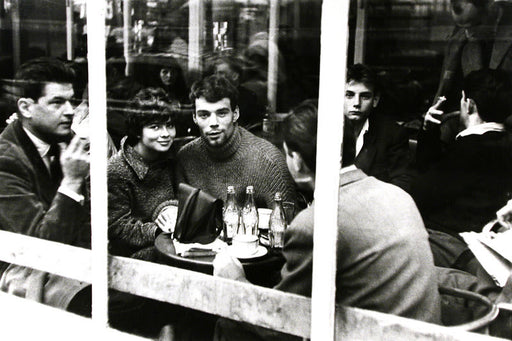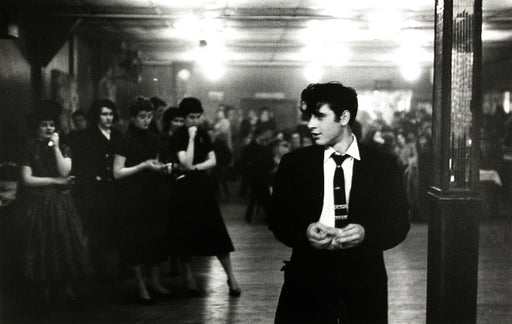 Sold
Sold
George S. Zimbel
Marilyn Monroe, N.Y.C., "The Energy", Seven Year Itch by George S. Zimbel
 Toronto, ON)
Toronto, ON)
Learn about our Shipping & Returns policy.
Have a question? Read our FAQ.
- Artwork Info
- About the Artist
- About this Photograph
- Artist Docs
-
1954
Gelatin silver print
Signed, titled, and dated, au verso
Printed later -
George S. Zimbel (American, b. 1929): In an era of increased manipulation of the photographic image by computer technology, George Zimbel’s commitment to the straight photograph has become stronger. A hallmark of his approach is non-intervention. He photographs what is really happening and feels that serious observation is more important than creating a scene.
When he exhibits his work, the walls are hung with photographs from the 1940s through to 2009, always printed by himself. He has been photographing for over 70 years with an eye that is life positive. He regularly produces new work.
An alumnus of Columbia University, the Photo League and the Alexy Brodovitch Seminar, he honed his craft in New York City, working for national magazines (Look, The New York Times, Redbook, Parents, Architectural Forum). He worked on self-initiated projects parallel to his assignments. These included diverse subjects such as 1950s European Photographs; A Book of Readers, from libraries to submarines; Politics in the U.S. and Canada; Marilyn Monroe in the classic movie, The Seven Year Itch; and the ongoing story of his family.
In 2000, Zimbel was honoured with the largest photography exhibit ever shown at Institut Valencia D’Art Modern in Spain. A major catalogue was issued at that time. In 2001, he was the recipient of the Lifetime Achievement Award of Canadian Photographers in Communications and was shortlisted for the Roloff Beny Award for best Canadian photographic book. In 2004, he had a retrospective exhibition at Confederation Centre Museum and later that year was a major presence in the Marilyn Monroe exhibition at the Brooklyn Museum. Subsequently, Zimbel was featured in the PBS American Master’s production, Marilyn Monroe: Still Life. In 2005 he had a retrospective exhibition at the Canadian Embassy in Tokyo and the Owens Art Gallery, Mount Allison University followed by publication of his book Bourbon Street New Orleans 1955. In 2006 he was inducted into the Royal Canadian Academy of Art. -
Marilyn Monroe captivated audiences in the 1950s. An embodiment of America’s optimistic excesses during that post-war era, Marilyn’s character in The Seven Year Itch was the epitome of the feminine beauty ideal of the time. Billy Wilder’s film laid bare the conflict of societal conformity against individual freedom, with its witty dialogue and clever staging – including that iconic scene over the subway grate – making it a classic from Hollywood’s “Golden Age”.
As a young and eager photographer, George S. Zimbel was trying to eke out a career as a photojournalist and, as per usual, was playing cards with other photographers while waiting for news of an event that they could try to capture in a photograph good enough to sell to newspapers and magazines. Older photographers soon joined them, many of whom were discarding their press passes to photograph the publicity event surrounding what would become the infamous scene of Marilyn’s dress being uplifted by the air from a passing subway train below. The veteran photographers knew the studio would release official photographs for free, thus negating any ability to sell additional photographs, so they declined to participate. Zimbel, along with his pal Garry Winogrand, quickly scooped up those press passes and shot through the evening. The early morning hours saw them in darkrooms processing film, making contact sheets and 8×10 prints to deliver to editors of The New York Times, and other media outlets, only to be rebuffed because the studio had already supplied free, official photographs. Discouraged, Zimbel filed his photographs, and they remained hidden for the next 20 years. Eventually, he moved to Prince Edward Island. It was when the local museum was organizing an exhibition around the idea of motion in still photographs that, recalling his photographs of Marilyn twirling in her dress, Zimbel submitted his Marilyn Monroe photographs to be exhibited in public for the first time. Since then, his photographs of Marilyn have been shown around the world and can be found in the permanent collections of prestigious international art museums. -
Artist CV (PDF)
Artist Bio (PDF)






